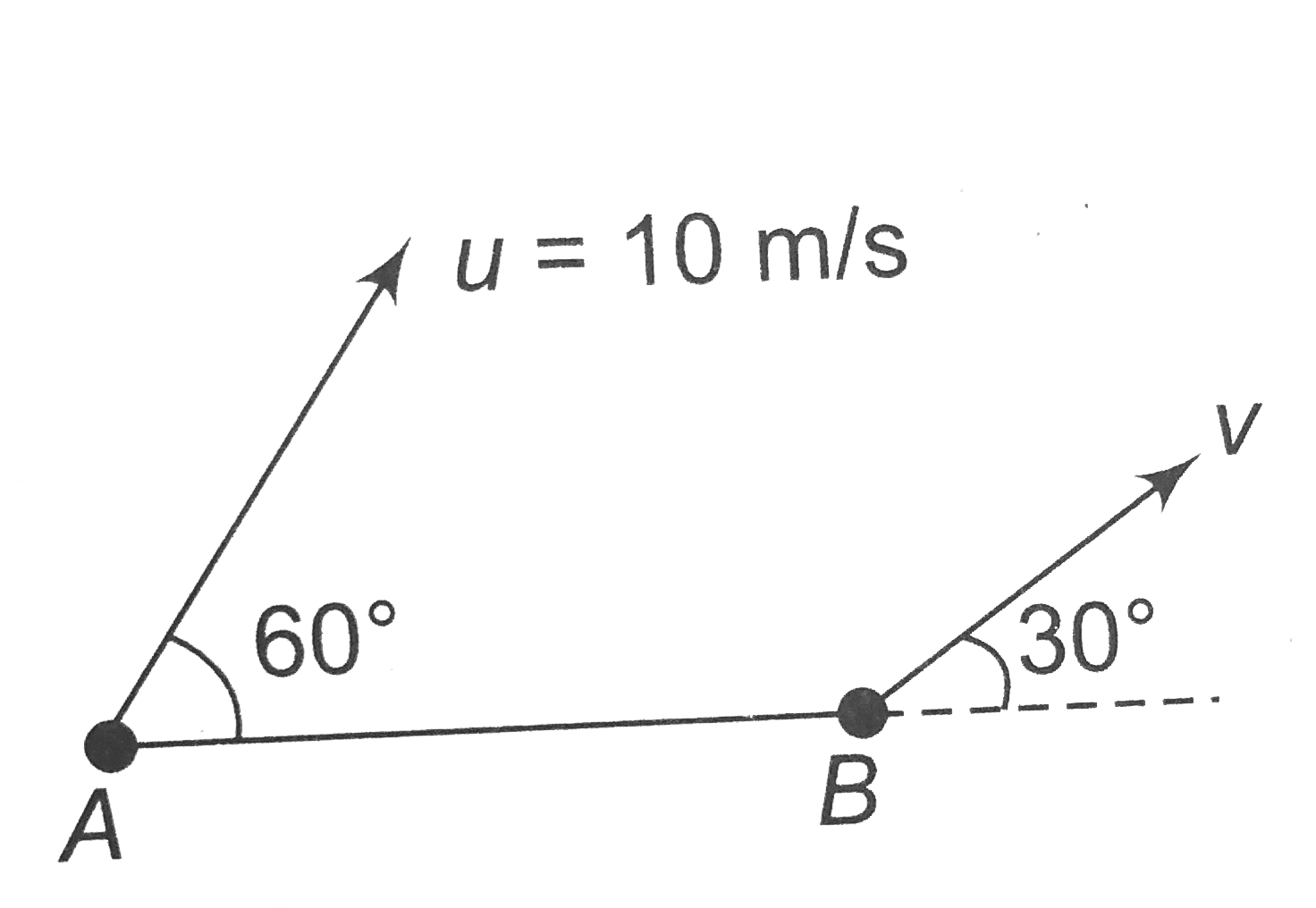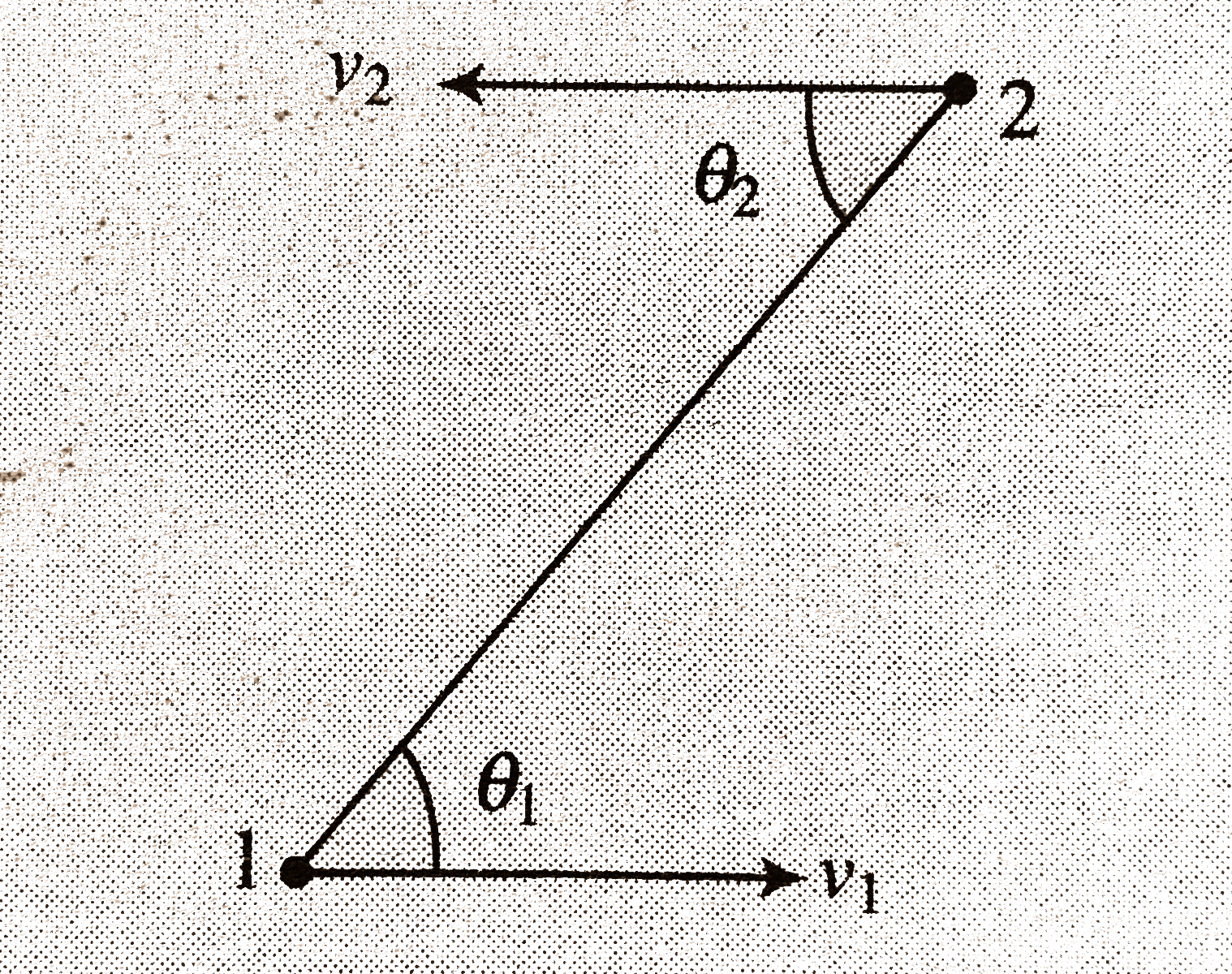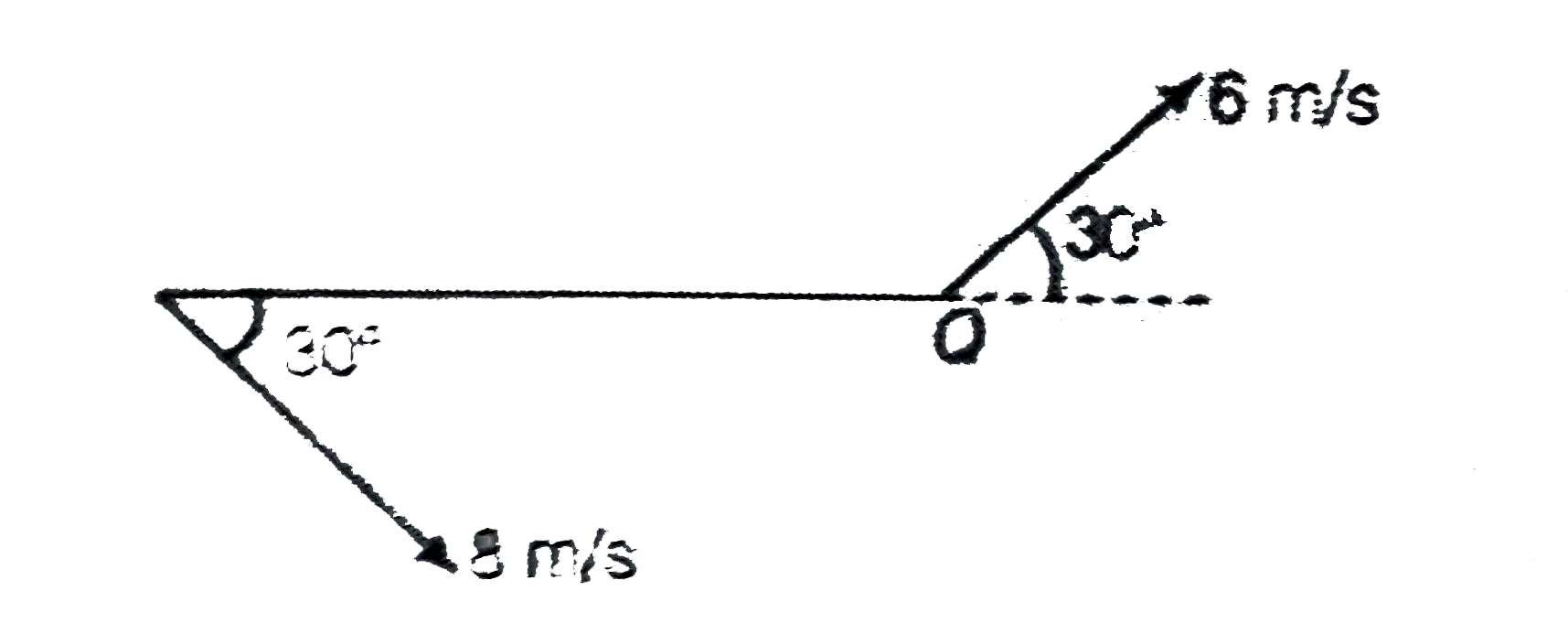A two particles P and Q are separated by distance d apart. P and Q move with velocity v and u making an angle 60∘ and θ with line PQ the graph between their relative separation (s) when time t is shown in figure (2). The velocity v in terms of u

√3u
u√3
u
u√2
The correct Answer is:B
Topper's Solved these Questions
- MOTION IN A PLANEBOOK - AAKASH SERIESCHAPTER - MOTION IN A PLANEEXERCISE - EXERCISE-3 (Circular Motion)
7 Videos
- MOTION IN A PLANEBOOK - AAKASH SERIESCHAPTER - MOTION IN A PLANEEXERCISE - EXERCISE-3 (A boat in a river)
3 Videos
- MAGNETISMBOOK - AAKASH SERIESCHAPTER - MAGNETISMEXERCISE - PROBLEMS (LEVEL-II)
13 Videos
- MOTION IN A PLANEBOOK - AAKASH SERIESCHAPTER - MOTION IN A PLANEEXERCISE - QUESTION FOR DESCRIPTIVE ANSWER
7 Videos
Similar Questions
Two particles A and B are situated at a distance d=2m apart. Particle A has a velocity of 10m/s at an angle of 60∘ and particle B has a velocity v at an angle 30∘ as shown in figure. The distance d between A and B is constant. the angular velocity of B with respect to A is :
 .
.
View SolutionTwo particles 1and2 move with velocities →v1 and →v2 making the angles θ1andθ2 with the line joining them, respectively. Find angular velocity of relative→1.
 .
.
View Solution
Knowledge Check
Two moving particles P and Q are 10 m apart at a certain instatn. The velocity of P is 8 m/sm making an angle of 30∘ with the line joining P abd Q and that of Q is 6m/s making an angle 30∘ with PQ as shwon in figure.

Then, angular velocity of P wiht respect to Q isAzeroB0.1rad/sC0.4rad/sD0.7rad/sTwo particles A and B are situated at a distance d=2m apart. Particle A has a velocity of 10m/s at an angle of 60∘ and particle B has a velocity v at an angle 30∘ as shown in figure. The distance d between A and B is constant. the angular velocity of B with respect to A is :
 .A5√3rad/sB5√3rad/sC10√3rad/sD10√3rad/s
.A5√3rad/sB5√3rad/sC10√3rad/sD10√3rad/sTwo moving particles P and Q are 10 m apart at a certain instant. The velocity of P is 8 m/s making 30º with the line joining P and Q and that of Q is 6 m/s making an angle 30º with PQ as shown in the firuge .Then angular velocity of P with respect to Q is-
 A0rad/sB0.1rad/sC0.4rad/sD0.7rad/s
A0rad/sB0.1rad/sC0.4rad/sD0.7rad/s
Two particles 1and2 move with velocities →v1 and →v2 making the angles θ1andθ2 with the line joining them, respectively. Find angular velocity of relative→1.
 .
.
View SolutionTwo particles are moving with velocities v1andv2 . Their relative velocity is the maximum, when the angle between their velocities is
View SolutionA particle is projected with a velocity u making an angle θ with the horizontal. At any instant its velocity becomes v which is perpendicular to the initial velocity u. Then v is
View SolutionTwo particles are moving with velocities v1andv2 . Their relative velocity is the maximum, when the angle between their velocities is
View SolutionTwo particles of masses p and q(p>q) are separated by a distance d. The shift in the centre of mass when the two particles are interchanged is
View Solution
